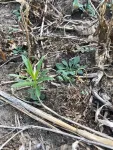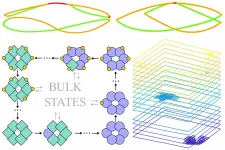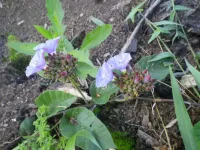New 'atlas' charts how antibodies attack spike protein variants
Antibodies capable of neutralizing multiple SARS-CoV-2 strains can inform strategies for broadly protective COVID-19 booster vaccines
2021-07-23
(Press-News.org) As the SARS-CoV-2 virus that causes COVID-19 continues to evolve, immunologists and infectious diseases experts are eager to know whether new variants are resistant to the human antibodies that recognized initial versions of the virus. Vaccines against COVID-19, which were developed based on the chemistry and genetic code of this initial virus, may confer less protection if the antibodies they help people produce do not fend off new viral strains. Now, researchers from Brigham and Women's Hospital and collaborators have created an "atlas" that charts how 152 different antibodies attack a major piece of the SARS-CoV-2 machinery, the spike protein, as it has evolved since 2020. Their study, published in Cell, highlights antibodies that are able to neutralize the newer strains, while identifying regions of the spike protein that have become more resistant to attack.
"Emerging data show that vaccines still confer some protection from new SARS-CoV-2 variants, and our study shows how that works from an antibody standpoint," said corresponding author Duane Wesemann, MD, PhD, of the Division of Allergy and Clinical Immunology and Division of Genetics at the Brigham and an associate professor at Harvard Medical School. "These data can help us think about what the best kind of booster vaccine might be by studying how the repertoire of human antibodies recognizes the spike protein."
The researchers examined the antibody-producing Memory B cells of 19 patients who were infected with SARS-CoV-2 in March of 2020, before the emergence of new variants. They studied how these antibodies, as well as other antibodies that have been characterized by researchers, bind to spike protein models of the B.1.1.7 (Alpha), B.1351 (Beta) and P.1 (Gamma) variants of SARS-CoV-2, which were first identified in the United Kingdom, South Africa, and Brazil, respectively. An analysis of the Delta variant is currently underway.
Overall, the authors confirmed that the hundreds of antibodies they studied largely bind to seven major "footprints" on the spike protein. While many of these antibodies "compete" to bind to the same regions of the early version of the SARS-CoV-2 spike protein, when it comes to newer strains, some of these antibodies lose their potency while others emerge as broadly responsive neutralizers.
In particular, antibodies binding to two of these spike protein regions, dubbed RBD-2 and NTD-1, were the most potent neutralizers of initial forms of the spike protein. The B.1.351 spike variant proved to exhibit the greatest ability to evade existing antibody arsenals, escaping many RBD-2- and NTD-1-binding antibodies. Some antibodies binding another region, called S2-1, could recognize spike proteins from more distantly related viruses such as MERS, SARS, and common cold coronaviruses.
"Making different antibodies that compete for one region of the virus allows the immune system to be more flexible," Wesemann said. "Otherwise-redundant recognition by antibodies targeting the same footprint of one version of the virus confers recognition depth of the same footprint on variants, and some antibodies maintain high neutralization potency against all the variants. Now that we can identify the antibodies that are more broadly reactive to all of the variants, we can think about how to elicit them more strongly in a vaccine."
INFORMATION:
This study was supported by NIH grants T32 AI007245, T32 GM007753, AI146779, AI007512, T32 AI007306, AI121394, AI139538, and AI137940, and by MassCPR and Fast Grants for COVID Science.
Paper cited: Tong P et al. "Memory B Cell Repertoire for Recognition of Evolving SARS-CoV-2 Spike" Cell DOI: 10.1016/j.cell.2021.07.025
ELSE PRESS RELEASES FROM THIS DATE:
2021-07-23
Many species within Kenya's Tana River Basin will be unable to survive if global temperatures continue to rise as they are on track to do - according to new research from the University of East Anglia.
A new study published in the journal PLOS ONE today outlines how remaining within the goals of the Paris Agreement would save many species.
The research also identifies places that could be restored to better protect biodiversity and contribute towards global ecosystem restoration targets.
Researcher Rhosanna Jenkins carried out the study as part of her PhD at UEA's School of Environmental Sciences.
She said: "This research shows how many species within Kenya's Tana River Basin will be unable to survive if global temperatures continue to rise as they are on track to do.
"But remaining ...
2021-07-23
For young soccer players, participating in repetitive technical training activities involving heading during practice may result in more total head impacts but playing in scrimmages or actual soccer games may result in greater magnitude head impacts. That's according to a small, preliminary study released today that will be presented at the American Academy of Neurology's Sports Concussion Conference, July 30-31, 2021.
"Headers are a fundamental component to the sport of soccer. Therefore, it is important to understand differences in header frequency and magnitude across practice and game settings," said study author Jillian Urban, PhD, MPH, of Wake ...
2021-07-23
University of Virginia School of Medicine researchers have discovered a previously unknown repair process in the brain that they hope could be harnessed and enhanced to treat seizure-related brain injuries.
Common seizure-preventing drugs do not work for approximately a third of epilepsy patients, so new and better treatments for such brain injuries are much needed. UVA's discovery identifies a potential avenue, one inspired by the brain's natural immune response.
Using high-powered imaging, the researchers were able to see, for the first time, that immune cells called microglia were not just removing damaged material after experimental seizures but actually appeared to be healing damaged neurons.
"There has been mounting generic support for the idea that microglia ...
2021-07-23
WESTMINSTER, Colorado - July 23, 2021 - Horseweed is a serious threat to both agricultural crops and natural landscapes around the globe. In the U.S., the weed is prolific and able to emerge at any time of the year.
Fall emerging horseweed overwinters as a rosette, while spring emerging horseweed skips the rosette stage and grows upright. In some instances, both rosette and upright plants emerge simultaneously in mid-summer. These unpredictable growth patterns create challenges for growers as they try to develop an appropriate weed management plan.
In a study featured in the journal Weed Science, a team from Michigan State University explored whether environmental cues could be used to predict horseweed growth ...
2021-07-23
A research team led by Dr Rosario Delgado from the UAB Department of Mathematics, in collaboration with the Hospital de Mataró, developed a new machine learning-based model that predicts the risk of mortality of intensive care unit patients according to their characteristics. The research was published in the latest edition of the journal Artificial Intelligence in Medicine, with a special mention as a "Position paper".
Under the framework of Artificial Intelligence, machine learning allows a model to gain knowledge based on the information provided by available ...
2021-07-23
When can we say that a certain property of a system is robust? Intuitively, robustness implies that, even under the effect of external perturbations on the system, no matter how strong or random, said property remains unchanged. In mathematics, properties of an object that are robust against deformations are called topological. For example, the letters s, S, and L can be transformed into each other by stretching or bending their shape. The same holds true for letters o, O, and D. However, it is impossible to turn an S into an O without a discontinuous operation, such as cutting the O apart or sticking the two ends of the S together. Therefore, we say that the letters s, S and L have the same topology - as do the letters o, O and D - ...
2021-07-23
Chemotherapy has helped make acute lymphoblastic leukemia (ALL) one of the most survivable childhood cancers. Now, researchers working in the U.S., Germany and China have shown how chemotherapy drugs called thiopurines can lead to mutations that set patients up for relapse. The work appears today in the journal Nature Cancer.
The research provides the first direct genomic and experimental evidence in pediatric cancer that drug-resistant mutations can be induced by chemotherapy and are not always present at diagnosis.
"The findings offer a paradigm shift in understanding how drug resistance develops," said Jinghui Zhang, Ph.D., Department of Computational Biology chair at St. Jude Children's Research Hospital. "The ...
2021-07-23
Rivers are lifelines for many countries. They create valuable ecosystems, provide drinking water for people and raw water for agriculture and industry. In the Global South in particular, there is strong competition for access to freshwater resources. The increasing use of hydropower has recently intensified this competition further.
Take Ethiopia, for example: when the country began filling the mega-?dam Gibe III on the Omo River in 2015, downstream users saw a drop in water volumes. Natural flooding declined, reducing the volume of fertile mud washed onto the floodplain. The level of Kenya's Lake Turkana, into which the Omo flows, fell temporarily by two metres, resulting in significant consequences for people and agriculture.
Addressing ...
2021-07-23
Scientists have identified five new plant species in the Bolivian Andes.
The species are all part of the genus Jacquemontia, which are twining or trailing plants with pretty blue flowers.
With rapid biodiversity loss taking place across South America and worldwide, identifying plant species is a vital step towards protecting them.
The new study, which classifies and describes the 28 Jacquemontia species now known to live in Bolivia and Peru, was carried out by the universities of Exeter and Oxford, and the Royal Botanic Gardens, Kew.
"Many plant species have not been identified and classified, especially in the tropics," said Rosie Clegg, of the University of Exeter and Kew.
"If you don't know what a species is, you can't ...
2021-07-23
Most children with a mental health disorder are not receiving services to address their needs--according to a new study from researchers at Simon Fraser University's Children's Health Policy Centre. Their research was published this week in the journal Evidence-Based Mental Health.
Researchers found that of the one in eight children (12.7 per cent) who experience a mental disorder, less than half (44.2 per cent) receive any services for these conditions.
"We have illuminated an invisible crisis in children's mental health and unacceptable service shortfalls in high-income countries -- including in Canada -- to a degree that violates children's rights," says study author Charlotte Waddell, ...
LAST 30 PRESS RELEASES:
[Press-News.org] New 'atlas' charts how antibodies attack spike protein variants
Antibodies capable of neutralizing multiple SARS-CoV-2 strains can inform strategies for broadly protective COVID-19 booster vaccines





